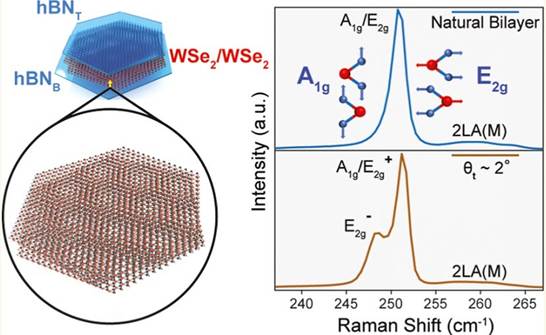Ministry of Science & Technology
Breakthrough research paves way for engineering materials vital for emerging quantum technology
Posted On:
25 APR 2025 6:14PM by PIB Delhi
A breakthrough method of controlling properties of phonons-- energy wave travelling through crystal lattice on vibration of atoms of the material, through twist angles between layers of two-dimensional materials, can help engineer materials with tailored thermal, optical, and electronic characteristics, vital for quantum technology.
A phonon is a collective excitation in a periodic, elastic arrangement of atoms or molecules in condensed matter like a tiny wave of energy that travels through the crystal lattice when atoms in the material start to vibrate. They are similar to movement of ripples in a pond on dropping of a stone.
Phonon properties and their interactions can play a crucial role in developing optoelectronics tunable photonic devices. Scientists are exploring different methods in controlling properties of phonons for the purpose.
Researchers at the Indian Institute of Science (IISc), Bangalore, have uncovered a method to vary twist angles in WSe2 (Tungsten diselenide) homobilayers to influence phonon hybridization and other key properties. This study, published in ACS Nano highlights the intricate relationship between periodic structures that form when two or more two-dimensional (2D) lattices overlap (moiré superstructures) and their impact on phononic and electronic interactions.

Fig: Left panel – schematic of twisted WSe2. Right panel – Raman spectra from natural and twisted bilayer of WSe2.
Using Raman spectroscopy, the team demonstrated that twist angles between 1° and 7° in WSe2 homobilayers induce splitting in phonon modes. They also showed that unusual temperature-driven changes in Raman frequencies and line widths, particularly at low temperatures (below 50 K), emphasizing the interplay of electron-phonon coupling and phonon anharmonicity (restoring force in the system is not perfectly proportional to the displacement from equilibrium) in twisted systems.
This research which used the Raman facility, set up with support from the FIST (Fund for Improvement of S&T Infrastructure in Universities and Higher Educational Institutions) program of Department of Science and Technology, and received funding support of DST, opens new pathways for the design of advanced materials for photonic, quantum, and electronic applications.
***
NKR/PSM
(Release ID: 2124367)
Visitor Counter : 431